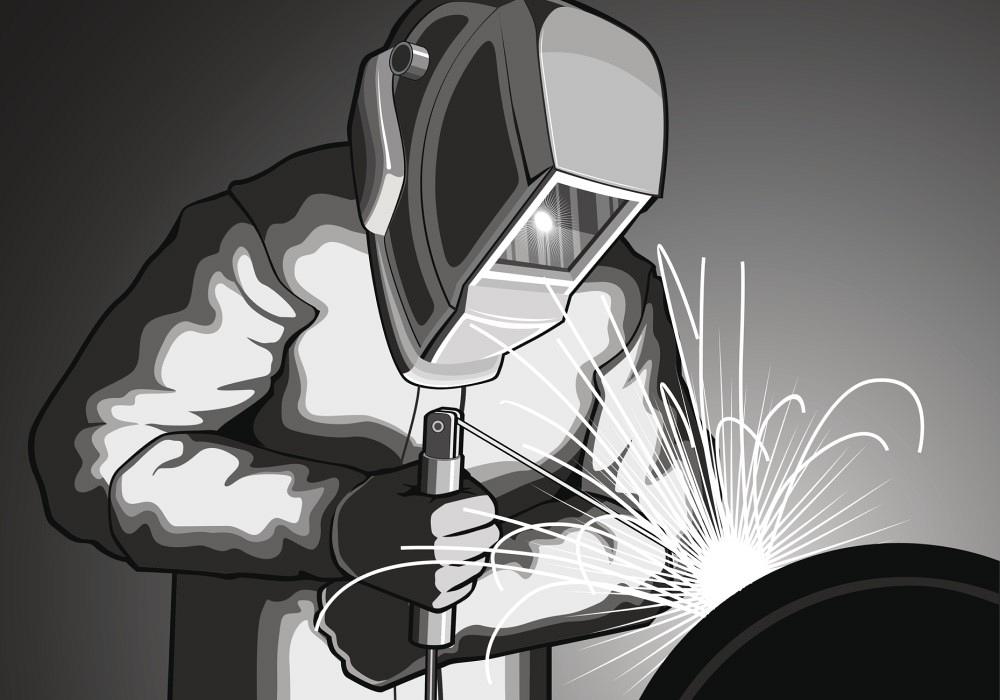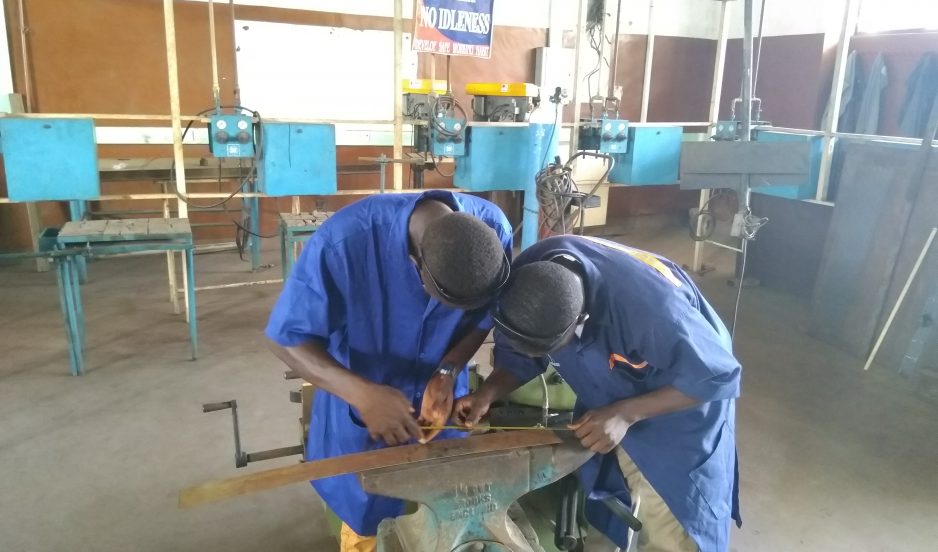Common Welding Repair Issues and How to Address Them Successfully
Welding repair work frequently run into a range of concerns that can threaten the stability of the last item. Typical problems consist of inadequate penetration, porosity, and misalignment, to name a few. Each issue provides unique challenges that call for specific techniques for resolution. Recognizing these issues is important for welders intending to improve their skills and outcomes. This conversation will certainly discover these common welding fixing problems and efficient techniques to resolve them.
Insufficient Infiltration
Poor infiltration takes place when the weld steel falls short to fully fuse with the base product, resulting in weak joints and possible structural failures. This concern often stems from not enough heat input, inaccurate electrode angle, or inappropriate welding rate. Welders might experience inadequate infiltration due to a mistake of the essential specifications for a specific product density or kind. Additionally, contamination on the base material's surface area can prevent reliable bonding, intensifying the trouble. To deal with poor infiltration, welders ought to guarantee proper settings on their equipment and maintain a tidy job surface area. Normal inspection of welds is suggested to identify any deficiencies early, enabling timely adjustments and the avoidance of jeopardized structural stability in welded settings up.
Porosity
Porosity is a typical flaw in bonded joints that manifests as small gas bubbles trapped within the weld steel. This problem can compromise the integrity of the weld, leading to decreased toughness and prospective failing under stress. Welding. Porosity usually occurs from contamination, moisture, or incorrect welding strategies, which allow gases to get away into the liquified weld swimming pool. To deal with porosity, welders need to assure correct surface preparation, maintain a tidy functioning setting, and make use of suitable welding parameters. In addition, picking the ideal filler product and shielding gas can minimize gas entrapment. Routine inspection and testing of welds can aid determine porosity early, ensuring timely corrective actions are taken, thus protecting the quality and dependability of the welded structure
Imbalance
Imbalance in welding can develop from numerous elements, consisting of incorrect arrangement and thermal expansion. Understanding the source is vital for efficient resolution. A number of adjustment strategies are available to realign elements and ensure architectural stability.
Root causes of Misalignment
Welding imbalance usually stems from a variety of underlying issues that can endanger architectural honesty. One primary cause is inappropriate fit-up of elements before welding, which can lead to spaces and irregular surfaces. Variants in thermal expansion during the welding procedure can also lead to distortion, especially if the products being signed up with have various coefficients of expansion. Furthermore, inadequate clamping and fixturing might fall short to hold components safely in position, causing motion during welding. Poorly maintained tools, including welding machines and devices, might introduce inconsistencies in the weld bead, additional adding to misalignment. Lastly, driver mistake, originating from not enough training or experience, can likewise play a substantial role in producing misaligned welds.
Correction Methods Available
Addressing misalignment properly calls for a mix of corrective techniques tailored to the certain problems at hand. One typical approach is the usage of jigs or components to hold components in the proper placement throughout welding, guaranteeing regular placement. Additionally, pre-heating the products can help in reducing distortion and enhance fit-up. For significant misalignment, mechanical realignment techniques, such as using hydraulic jacks or clamps, can be utilized to fix the setting before welding. Post-weld warm treatment might additionally be essential to eliminate anxieties brought on by misalignment. Mindful inspection and change throughout the configuration phase can protect against misalignment concerns from becoming considerable issues, advertising a smoother welding process and enhancing overall structural honesty.
Distortion
Distortion is a common difficulty in welding that can emerge from numerous variables, including irregular home heating and air conditioning. Understanding the reasons for distortion is crucial for executing reliable prevention strategies. Addressing this concern not only enhances architectural integrity however likewise improves the overall top quality of the weld.
Sources of Distortion
When based on the extreme heat of welding, materials often undertake modifications that can lead to distortion. This phenomenon primarily occurs from thermal growth and contraction during the welding process. As the weld area warms up, the material broadens; upon cooling, it gets, which can produce inner stresses. On top of that, irregular heating across a workpiece can worsen these tensions, causing warping or bending. The sort of material likewise plays a significant role; metals with differing thermal conductivity and coefficients of growth may react in different ways, leading to uncertain distortions. Poor joint layout and inadequate fixturing can contribute to misalignment during welding, boosting the chance of distortion. Comprehending these reasons is necessary for reliable welding fixing and avoidance strategies.
Prevention Techniques
Reliable prevention techniques for distortion during welding concentrate on controlling heat input and guaranteeing proper joint style. Maintaining a consistent warm input aids to reduce thermal growth and contraction, which can bring about distortion. Making use of techniques such as pre-heating the workpiece can additionally decrease the temperature level slope, promoting consistent heating. Additionally, choosing ideal joint designs, such as T-joints or lap joints, can improve stability and decrease stress concentrations. Applying proper fixturing to secure the workpieces in area better aids in preserving positioning throughout the welding process. Staggered welding sequences can disperse heat extra uniformly, avoiding local distortion. By applying these strategies, welders can considerably lower the probability of distortion and enhance the overall top quality of their welds.
Breaking
Breaking is a typical issue encountered in welding repair services, frequently arising from numerous factors such as incorrect air conditioning rates, material selection, or insufficient joint preparation. The occurrence of cracks can significantly endanger the stability of the weld, causing possible failings during procedure. To address this concern, welders should first analyze the origin, making sure that materials are compatible and appropriately picked for the particular application. Additionally, regulating the air conditioning price throughout the welding process is vital; fast cooling can cause tension and cause cracking. Proper joint style and preparation likewise add to decreasing the risk. Executing these strategies can enhance weld quality and sturdiness, eventually minimizing the chance of cracking in completed weldments.

Insufficient Fusion
A substantial concern in welding repair work is insufficient combination, which takes place when the weld steel does not adequately bond with the base material or previous weld passes - Belgrade Fabrication. This defect can lead to weaknesses in the joint, possibly compromising the honesty of the bonded structure. Variables adding to insufficient fusion include not enough warm input, inappropriate welding strategy, and contamination of the surface areas being joined. To address this issue efficiently, welders ought to ensure proper pre-weld cleaning and surface preparation, along with adjust their welding parameters to achieve adequate penetration and fusion. Normal assessment throughout the welding process can likewise aid recognize insufficient fusion early, permitting prompt restorative measures to improve the general high why not look here quality of the weld
Overheating
While welding repair services can enhance architectural stability, overheating provides a significant difficulty that can lead to product degradation. Excessive warm during welding can change the mechanical residential or commercial properties of steels, causing lowered stamina, raised brittleness, and warping. This sensation is particularly essential in high-stress applications where structural dependability is paramount. Determining overheating can include visual assessments for staining or distortion, along with monitoring temperature level throughout the welding procedure. To mitigate the threats linked with getting too hot, welders need to use proper techniques, such as controlling heat input, readjusting traveling rate, and using ideal filler products. Additionally, applying pre- and post-weld warm treatments can aid bring back product homes and enhance the total high quality of the fixing, making sure long-term efficiency and safety.
Often Asked Questions
What Are the Typical Indicators of a Welding Defect?

How Can I Examine My Welds for Top quality?
To examine welds this website for quality, one can make use of aesthetic inspections, ultrasonic testing, and radiographic approaches. Each strategy ensures architectural honesty, recognizes flaws, and confirms adherence to specified criteria, inevitably enhancing the reliability of the welded joints.
What Safety Preventative Measures Should I Take While Welding?
When welding, one need to focus on safety and security by using ideal individual safety devices, making certain proper air flow, safeguarding combustible products away, preserving a tidy office, and recognizing surroundings to stop accidents and injuries.
Can I Fix a Weld Without Renovating the Entire Joint?
Repairing a weld without redoing the whole joint is possible, relying on the damages (Montana Mobile Welding and Repair Belgrade). Strategies such as grinding, including filler product, or making use of a welding process can successfully attend to certain problems while protecting the surrounding structure
What Devices Are Essential for Effective Welding Repairs?
Vital devices for efficient welding fixings include a welding device, wire brush, mill, protective gear, clamps, and filler products. Each tool plays an important function in ensuring high quality and security during the repair procedure. Porosity normally occurs from contamination, wetness, or incorrect welding strategies, which enable gases to escape right into the liquified weld swimming pool. Badly kept tools, including welding makers and devices, might present inconsistencies in the weld bead, more adding to imbalance. When subjected to the intense heat of welding, materials typically go through modifications that can lead to distortion. Breaking is view it a common concern experienced in welding repairs, frequently resulting from different factors such as improper cooling prices, product option, or inadequate joint preparation. A considerable concern in welding repairs is incomplete blend, which takes place when the weld metal does not adequately bond with the base product or previous weld passes.